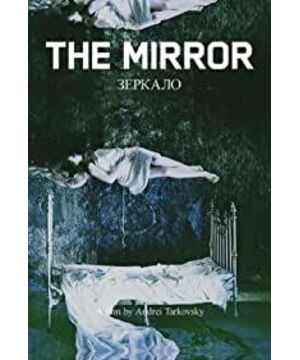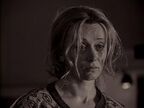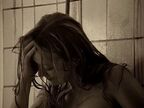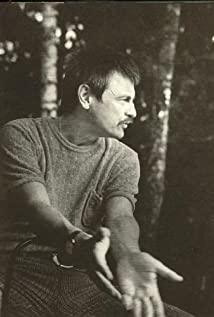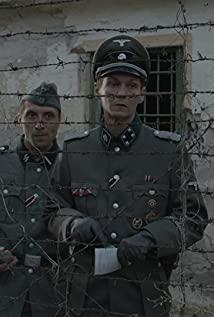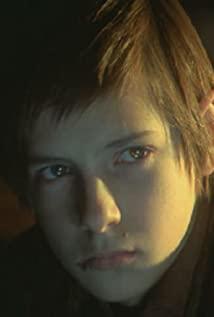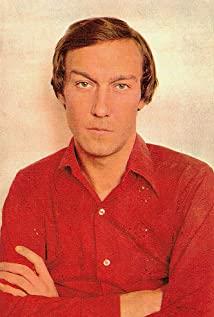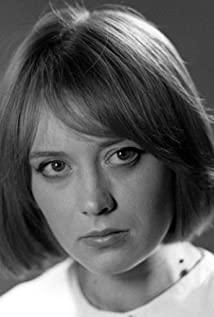begin
hero movie 15:45 childhood lying in bed, covered by fire crackling, but after the pendulum ticking voice sounded again, birds are generally mild After the sound ①, the child got up from the bed and looked forward. The camera turned into black and white grass and trees outdoors ②, birds chirping again, and the wind blew by. It is the sleeping child again, "Dad", with the sound of birds singing, getting up and getting out of bed, the camera is continuously black and white. When he reached the door, the bird chirping again, the ticking stopped gradually, and a white dress flew over from the back of the wall, and the child stopped in front of the door. All objects related to reality stop here (perhaps everything from the beginning of the black and white picture is just a child's dream)
A dark and humid room with small clusters of flames in the distant view. The shot of the father leaning over and watering the mother. The father leaves from the right side of the screen. The bottom of the camera shows the mother washing her hair. The mother gets up and the water ticks. The washbasin and the father disappeared, and the mother stood barefoot in the center of the room alone, with her long hair covering her face, only physical activity was seen. A large wardrobe with a mirror is placed on the left side of the room. There are several large windows on the wall behind the mother. The gas stove on the small cabinet between the windows is burning. The bottom right corner is fixed and extinguished, above the mother’s head. It was a dilapidated chandelier with water on the floor.
When the camera switched again, it was the scene behind the mother ⑤. The wall covering on the ceiling began to peel off in large pieces, and water splashed on the wooden floor. The fire on the stove grew stronger and stronger, and the background sound became tense. The camera was pulled back. The mother has disappeared from the original position in the center of the room ⑥ (maybe walking away)
The camera is switched, the mother is walking⑦, the ceiling keeps falling debris, the close-up of the character, judging from the scene, it should start from the position of the small cabinet originally behind him, pass the window, pause and look up at the corner of the room, passing the large closet Mirror. The camera reached the wall in front of the mother and paused. A shadow appeared to flash from the wall ⑧. Standing at the original angle, the camera turned forward. There was a dripping faucet on the wall, and under the faucet was a small mirror inlaid on the wall. , A brick wall appeared before, (should be a window hole) the mother appeared in the camera again, her body and hair were dry ⑨, surrounded by a shawl, behind a large bunch of flowers, seemed to be leaning on the window sill and looking indoors, The camera turns to the direction where the mother is looking. A huge translucent glass seems to be leaning against a certain wall of the room. The glass reflects the two windows that appeared in the previous shots, as well as the fire, and the painting can be seen vaguely. Clouds and a tree. The face of an elderly mother appeared on the glass⑩, also wearing a shawl, the mother looked at the blurred shadow and stroked the glass with her hand.
The scene of the room ends, the mother's hand, the flames burning behind the hand. The film
ends at 19:08 .
After a slight sound like a bird
chirping ①Some suggestive symbols often appear in Tukovsky’s films to indicate the beginning or end of an event. For example, the scene where the doctor turns around at the beginning of the film uses a gust of wind as a reason to turn back. , song birds like to be a child to wake up, get up, and the wind blowing through the laundry room door flew prompted repeated
shots into black and white outdoor vegetation ②
first turn
convert the film in black and white and color images is not limited In a certain period of time, such as dreams and reality, present and past, etc., it is free to switch with the change of each emotion, but in this segment of the film, the black and white picture starts from the trees outside the room and finally reaches the mother’s hand. And the appearance of the flame ends, running through this surreal segment, becoming the color of dreams. When the camera turns from the outdoors to the indoors, the child is sleeping again, and the repetition of this kind of shot also frequently appears in other forms in the following scenes of the film. This technique makes a dream unexpected and beyond reasonable. The complete presentation.
A white dress flies across the back of the wall ③The
second turning point
After this scene, the scene completely shifts from the bedroom to another room that does not belong to this house. This is also the first unreasonable beginning of this paragraph. The child stood at the door of the bedroom and watched the whole process of his dream. At the beginning of the dream, he had a premonition of the appearance of his father, but he could not go through the door to participate in it. The content of the dream belonged to the father, mother, and a strange room without himself. .
The lens starts to pull away. ④ The
third turning point.
This outstanding lens, accompanied by a gradually ringing background sound, becomes the climax of a dream. It also allows us to see the real appearance of the room. This is a damp and run-down room. There is a large wardrobe with a mirror on the wall on the right. There are two windows and a small stove on the wall behind the mother. There is a lamp on the mother’s head. So far we can seem to describe the room. The rough plan is now, but the camera is dishonest. Father, the water bottle, and the camera disappeared while the camera was moving. Mother stood alone in the center of the room in isolation. (Father’s indifferent expression seemed to indicate from the beginning Leaving)
The subject of the dream seems to have shifted a little. This is no longer what a child can see, but the mother's mental state, the feeling of independence of living alone, and the longing for her husband, wet and cold.
The camera switch again is the scene behind the mother. ⑤The
fourth turning
lens shows a false scene again. The pink peeling of the ceiling and the fierce sound of splashing water on the ground may be the reason for the image quality (?) This group of shots seems to be out of the overall In the passage, the color is jerky and unreal.
The camera is pulled back, and the mother has disappeared from the original position in the center of the room. ⑥
Connecting to the last turning point. The
mother is walking. ⑦ The
fifth turning
character appears in the camera. The walking route conflicts with the previous turning point. The scene is from behind the mother. It should be seen from the small stove that was originally behind, passing through a window, a corner turning, and a large wardrobe with a mirror. The explanation of the route before the character moves is missing.
Pause, a shadow seems to flash from the wall⑧Mother
appears in the camera again, but her body and hair are dry⑨
The appearance of the sixth turning shadow foreshadows the unusual scene behind. The camera moves slightly faster than the mother's speed. A dangling shadow appears on the wall in front of the walking character. It flashes past, and then comes again. Water, a mirror. Moving forward, the mother appeared in front of the camera in a completely different state, the bouquet behind and the shawl on the shoulders looked soft and serene.
Here, the floor plan of the room is a step forward. In addition to the large wardrobe, a faucet and a mirror appear on the wall on the right, and a window hole is further ahead.
The face of an elderly mother appeared on the glass⑩As
the mother looked around, all the previous planes were disrupted, and all logically established scenes became illusions. Perhaps the mother's gaze was looking at her shadow reflected on the glass, or she might be looking at herself, who was standing in the other corner of the room, walking towards that piece of glass.
The glass should be leaning against the wall opposite the large wardrobe (two windows and a small stove are reflected at an oblique angle), but the image of the sky and trees that are also reflected is of unknown origin. Mother's old hand stroking the glass couldn't tell who was standing in the room. The climax of this dream did not solve all the mysteries, but closed everything in a larger illusion. When
I watched the film for the first time, I was deeply attracted by Tarkovsky’s method of making dreams. Things are logical but combined. It turns into illusion, the dream itself has no logic to follow. The plane I tried to draw was also blurred in the end, but the director’s technique gradually became clear. The camera and the characters "missed" again and again, repeated twice, and once again. Existence and the next nonexistence constitute the beginning and end of all illusions. The pause, slowdown, and rapidness of the lens make some objects disappear, or some unreasonable phenomena occur. This weak narrative method has been able to stand up through editing again and again.
View more about Mirror reviews


